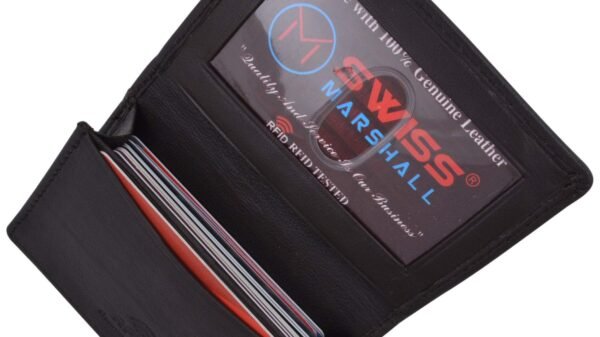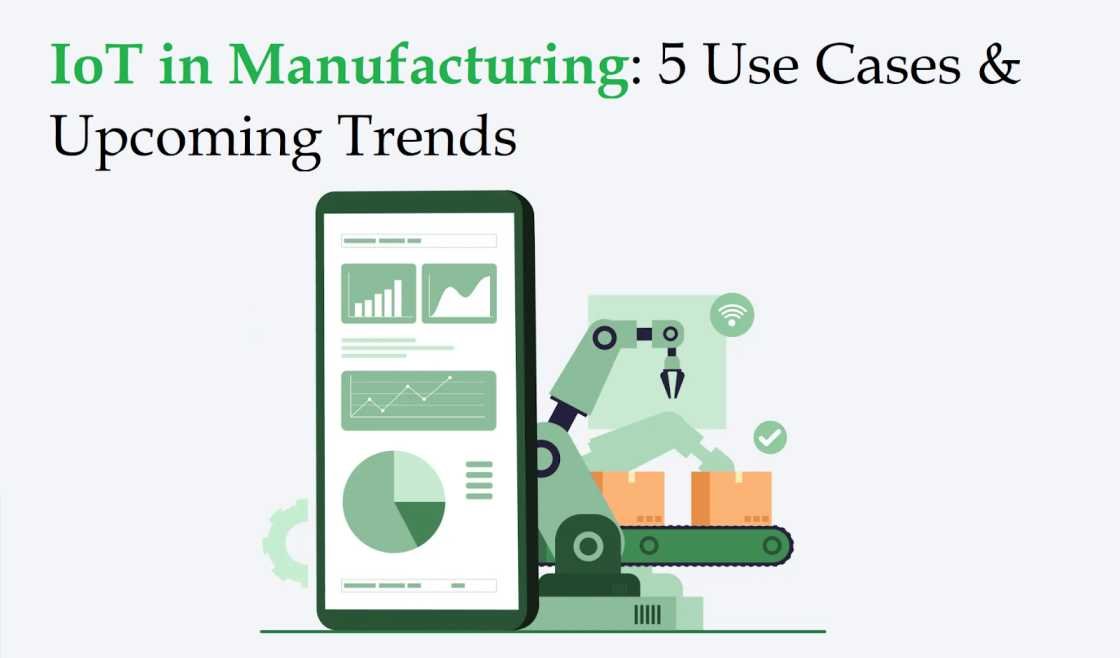The Internet of Things (IoT) is transforming industries across the board, and manufacturing is no exception. By connecting machinery, production lines, and inventory systems to the internet, manufacturers can harness data to optimize processes in ways never before possible. The global market for IoT in manufacturing is expected to grow from $202 billion in 2022 to $1829.21 billion by 2032, an impressive compound annual growth rate of 27.70%.
Implementing IoT in your manufacturing operations can lead to a wide range of benefits, including increased efficiency, improved product quality, reduced costs, and more flexibility and visibility across your supply chain.
Read on as we explore the most impactful current use cases for IoT in manufacturing, as well as some of the key trends set to shape the industry in the coming years.
Cases of IoT in Manufacturing
Predictive Maintenance
Unplanned downtime is the bane of every manufacturer’s existence. Not only does it directly translate to lost revenue opportunities, but the costs of emergency maintenance work can be up to nine times higher than routine scheduled repairs. By using sensors to monitor everything from vibration levels and temperature fluctuations to oil quality and other critical parameters, IoT enables manufacturers to move from reactive to predictive maintenance models.
Rather than waiting for failures to occur, IoT sensors provide warning signs that allow you to proactively address issues through routine maintenance. This prevents catastrophic equipment failure while optimizing the lifespan of machinery. For example, a leading auto manufacturer uses IoT vibration sensors to monitor critical equipment. This predictive approach has reduced their maintenance costs by 25% while also minimizing downtime.
The benefits here are clear – reduced maintenance overhead, extended equipment lifespan, higher asset utilization, and increased manufacturing uptime. Over time, the savings allow manufacturers to reinvest funds into business growth or other process optimization efforts.
Automated Quality Control
Product quality directly impacts brand reputation and customer satisfaction. While manufacturers have utilized automated inspection and testing mechanisms for years, IoT takes this to the next level. Computer vision systems, sensors, and automated sampling procedures allow for perpetual quality monitoring rather than just spot checks.
By combining high-resolution cameras with machine learning-enabled image analysis software, defects can be identified in real-time, preventing entire batches from being compromised. In industries like electronics, precision sensors can track minute fluctuations in product dimensions or tolerances. Should an issue arise at any point of the production process, alerts notify staff immediately, allowing for adjustments before high levels of waste occur.
The benefits span far beyond cost savings from reduced scrap rates. Real-time quality control improves consistency, ensuring only the highest-grade products make it to your customers. This bolsters brand loyalty and recommendations over the long term.
Inventory Management
Knowing what you have (and where it’s located) is one of the most fundamental principles for efficient manufacturing operations. IoT provides real-time inventory visibility through automated tracking of both raw materials and finished goods across facilities.
Radio frequency identification (RFID) tags assign unique identifying codes to individual items or batches. Combined with strategically placed sensors and scanners throughout warehouses, the flow of inventory can be traced seamlessly as it makes its way through assembly lines and shipping processes. Facility managers can instantly identify material shortages that may hamper production schedules and frontline workers can rapidly locate items without wasted searches.
For one industrial manufacturer, implementing an IoT-driven inventory management approach trimmed 12% from annual operating costs through inventory reduction and labor efficiencies. Better demand forecasting also minimized occurrences of stock shortages and improved cash flows.
Connected Supply Chains
Raw material suppliers, manufacturing plants, distribution centers, transportation fleets, channel partners, and customers represent the complex web of connections in modern supply chains. IoT offers new mechanisms for integrating these interdependent links to foster collaboration and transparency.
Sensor data empowers manufacturers with real-time visibility into supplier and logistics provider operations. Asset tracking provides shipment locations and environmental condition monitoring alerts manufacturers to delays or product damage. All of this data fuels predictive analytics engines to dynamically recalculate arrival times and reorder points.
Blockchain serves as the foundation for unified data platforms, securely sharing information across the ecosystem. Smart contracts self-execute to trigger payments, orders, and other transactions once conditions are met.
Early adopters are already witnessing benefits, including a 15% increase in on-time deliveries, 5% reduction in inventory costs, and nearly 30 hours saved per month resolving disputes between partners thanks to the unified ledger of shared data.
Remote Monitoring and Control
No manufacturer can afford to have staff constantly monitor every piece of machinery or production line parameter. Nor should they, when modern technologies enable remote oversight. IoT sensors track everything from equipment energy use and throughput to temperature and humidity levels. Cloud-based monitoring platforms aggregate this data to provide administrators with comprehensive overviews of facility operations.
When abnormalities occur, system alerts bring the issues to light even if no one is physically present to catch them. The source and severity can be assessed from anywhere and controls support rapid resolution. Rather than having to fly technicians out to remote plants, manufacturers can diagnose and resolve many problems via virtual troubleshooting.
The flexibility this brings allows staff to be allocated more efficiently while also enabling faster response times. Travel costs plummet while operations continue uninterrupted. For multi-site manufacturers, this is invaluable.
Trends in IoT for Manufacturing:
5G and Edge Computing
Blistering 5G networks will truly unlock IoT’s potential in manufacturing. Transferring enormous volumes of sensor data quickly will enable refined real-time decision making. As 5G rolls out across more industrial facilities over the next few years, expect to see smart manufacturing reach new heights.
Edge computing is the other critical technology primed to accelerate IoT adoption. By processing and analyzing data locally on-site rather than transmitting it all to distant cloud platforms, edge computing practically eliminates network latency while also saving bandwidth costs. Response times for critical monitoring and control functions will be measured in milliseconds rather than seconds. As processors leverage machine learning for more autonomous operation, this responsiveness is integral.
Artificial Intelligence and Machine Learning
Speaking of machine learning, it represents the brains behind realization of IoT’s promise. As sensors proliferate across factory floors and supply chains, they produce more data than humans can feasibly interpret and act upon. Sophisticated algorithms crunching this data identify patterns, model complex processes, and make predictions to refine manufacturing operations.
Early applications involve predictive maintenance and quality control as explored previously. However, the possibilities stretch much farther. Dynamic production scheduling, inventory optimization, forecast accuracy improvements, automated robotic workflows, and enhanced cybersecurity represent just some of the machine learning use cases set to revolutionize smart manufacturing.
When considering the competitive advantage AI-based applications can confer, smart adoption strategies are vital even if they begin with small pilot projects.
Digital Twins
What if manufacturers could simulate production processes or product designs in meticulously detailed virtual environments before ever committing expensive physical resources? Digital twins fulfill that vision. These virtual replicas of actual equipment and facilities allow engineers to model alternative configurations and workflow plans. Software calculates likely performance metrics, material requirements, cost projections, and other key parameters.
By fully understanding bottlenecks, quality issues, or design concerns ahead of time in a no-risk virtual setting, companies can optimize prototypes and facility layouts saving tremendous sums compared to fixing problems only detected after physical implementation. Digital twins fuse massive amounts of sensor data with design blueprints, equipment specifications, and even physics and chemistry simulations to mirror physical assets.
As digital twin platforms grow more sophisticated thanks to data from IoT sensor networks, each new production run or product iteration benefits from fine tuning based on simulations. Delta Air Lines estimates using digital twins has reduced its aircraft downtimes by 20%-25% already.
Industrial Cybersecurity
Unfortunately, all the promised benefits of IoT come with one colossal risk – cyberattacks. Hackers accessing networked sensors and controls could bring assembly lines grinding to a halt. Compromised supply chain data could wreak havoc through disrupted inventory orders and delayed shipments. While the damage might seem contained within individual factories at first, reverberations quickly impact downstream retail partners.
Without robust cybersecurity protocols and practices in place as the foundation for smart manufacturing initiatives, no manufacturer can safely embrace IoT. Perform risk assessments associated with increased connectivity of previously isolated equipment. Establish network segmentation schemes, beef up firewalls, mandate complex passwords, implement multi-factor user authentication, and regularly install software patches for all devices and platforms.
Regular personnel training also plays a vital role in preventing successful attacks. Any perceived savings from lax security postures will evaporate the moment operations get disrupted. Get security right first, then enjoy the fruits of IoT transformation.
Sustainability and Environmental Monitoring
With climate change accelerating, manufacturers face increasing pressures from customers, regulators, investors, and the public to reduce their environmental footprints. The granular operational insights and remote oversight enabled by IoT present new opportunities for “going green”.
Energy expenditure tracking provides the foundation for identifying savings possibilities. Production managers can monitor equipment operating parameters and cycle times to minimize uptime without sacrificing output. Supply chain data aids low impact logistics planning through route optimization, load consolidation, and more. Automation lessens reliance on fossil fuel vehicles for material transport within facilities as well.
Edge computing relieves sustainability pressures on data center energy demands and e-waste output resulting from discarded servers. Remote sensor networks facilitate vigilance over facility emissions, hydrological impacts, soil health, and other metrics becoming mandated by emerging regulations. IoT bolsters corporate sustainability across the environmental spectrum, delivering additive reputational value.
The Future Is Here
From shop floors to finished goods warehouses to transportation fleets, IoT stands ready to revolutionize manufacturing. Sensors, connectivity, automation, and intelligence represent individual technologies primed for convergence under the IoT banner. For manufacturers able to effectively harness the wave of data and smart capabilities flooding modern factories, transformative benefits await.
Competitive pressures will only increase as more producers ride IoT to higher efficiency and quality levels. The time is now to pilot projects generating valuable insights and impact – even starting small – while building foundations to support big data and connectivity demands. IoT app development partners bringing cross-domain expertise help navigate the complexity of integrating legacy equipment with modern smart devices and platforms.
Author Bio:- Hemang Trambadia
Hemang is a skilled digital marketing expert at Peerbits who has worked with a variety of businesses, from small startups to large corporations, helping them increase their online presence and drive more traffic to their websites. His expertise lies in search engine optimization (SEO), pay-per-click advertising (PPC), social media marketing, and email marketing. He is skilled at creating data-driven marketing campaigns that deliver results and is always up-to-date on the latest digital marketing trends and techniques. When he’s not working, Hemang enjoys watching movies and traveling.
Also read: What is the First Computer Virus in the Philippines?
A Comprehensive Guide to WordHippo 5 Letter Words




























































